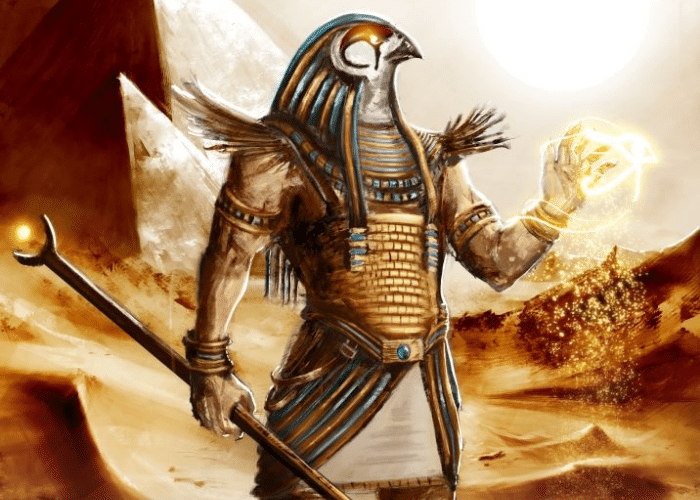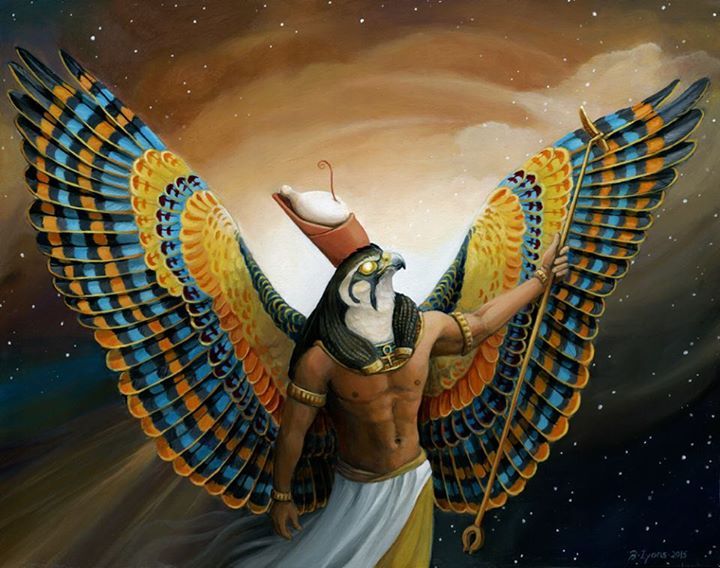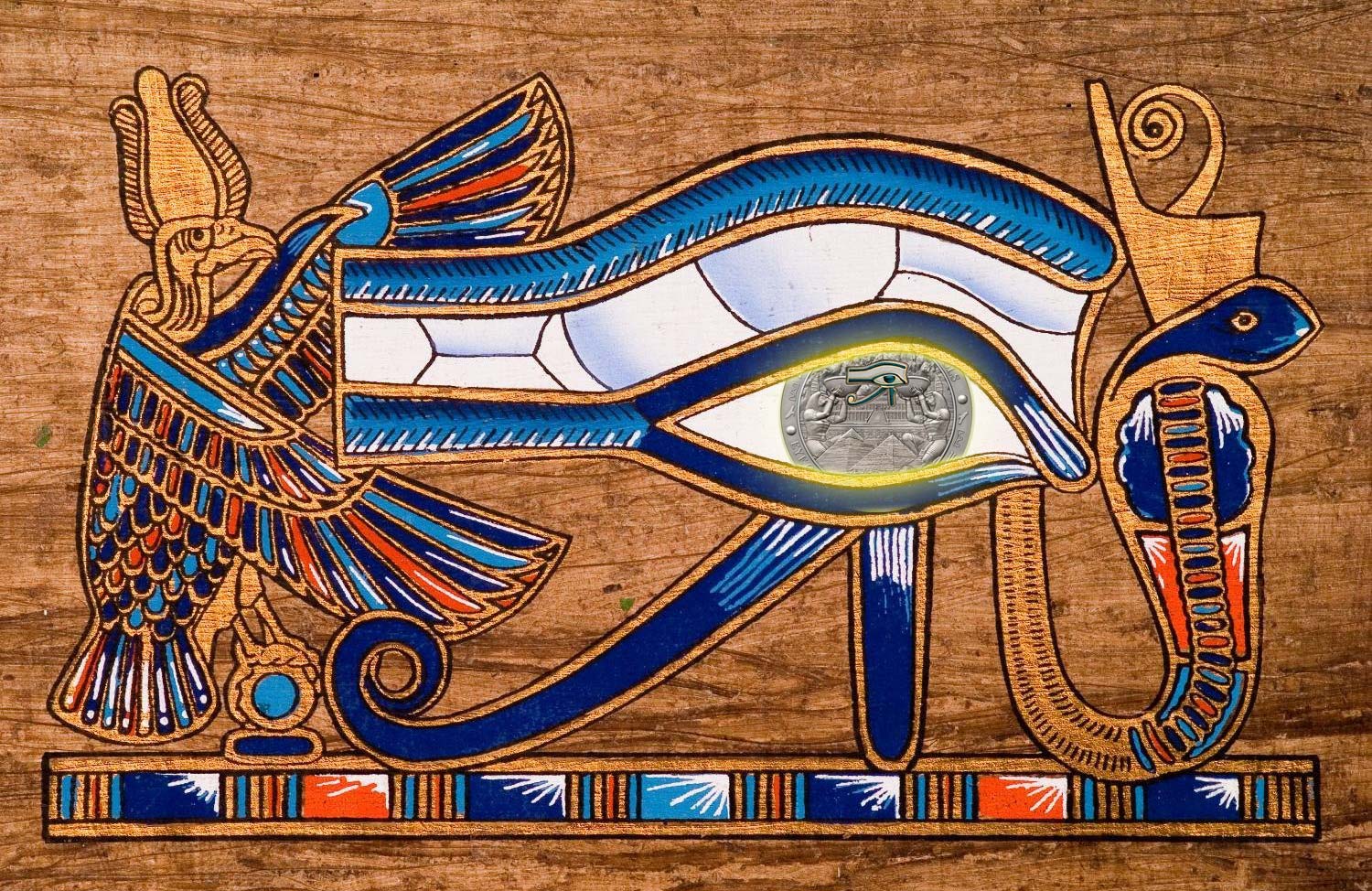Are you curious about the Egyptian god of the moon? Horus is a well-known deity in Egyptian mythology, but is he also a moon god? Many believe that since Horus was associated with the sky, he was also believed to contain the Sun and Moon. In fact, the Sun was thought to be his right eye and the Moon his left. Join us as we explore the fascinating world of Egyptian mythology and learn more about Horus, the Sun, and the Moon.
Unveiling the Myth: Debunking the Notion of Horus as a God of the Moon.
Horus is one of the most significant and revered gods in ancient Egyptian mythology. He was considered as the god of the sky, and his association with the celestial bodies like the Sun and Moon made him a prominent figure in the Egyptian pantheon. Although Horus’ divine domain is vast, he was often linked with the Moon in ancient Egypt. As per the Egyptian beliefs, Horus’ left eye represented the Moon, and his right eye represented the Sun, and his flight across the sky marked the movement of these celestial bodies.
Even though Horus is not exclusively a moon god, his association with the lunar sphere is undeniable. The Egyptians believed that the Moon was Horus’ left eye and called it the “Eye of Horus.” The Eye of Horus had a significant role in Egyptian mythology, representing protection, healing, and restoration. It was a symbol of power that was frequently used in talismans, amulets, and jewelry.
In conclusion, Horus, the god of the sky, was not solely a moon god, but his association with the lunar sphere was an integral part of his divine domain. The Egyptians believed that Horus contained the Sun and Moon, and his flight across the sky marked the movement of these celestial bodies. The Eye of Horus, which represented the Moon, was a powerful symbol in ancient Egypt and had a significant role in their mythology.

🍿 Must Read What is Thanos a god of?
Moon Deity of Ancient Egypt: Exploring the Mythical Identity of the Lunar God
2300 BCE), but it is not certain that he was a lunar deity. However, by the New Kingdom period (c. 1539–1075 BCE), Khonsu had become firmly established as the god of the moon. He was believed to be the son of the creator god Amun and the goddess Mut, and he was often depicted with a sidelock of hair, a symbol of youth, and a crescent moon on his head.
Khonsu was an important god in Egyptian religion, and he was associated with fertility, healing, and protection. He was also believed to control the tides and the seasons, and to have the power to cure diseases and ward off evil spirits. As a result, he was often invoked during rituals and ceremonies, particularly those related to childbirth and other important life events.
In art, Khonsu was often depicted holding a crook and flail, symbols of power and authority, and wearing a crown with a crescent moon and a full moon. He was also sometimes shown holding a lotus flower, a symbol of rebirth and regeneration.
Overall, Khonsu was a significant god in ancient Egyptian religion, and his association with the moon made him an important figure in the Egyptian pantheon. His importance is evident in the many temples and shrines dedicated to him throughout Egypt, and in the numerous depictions of him in art and literature.
Unraveling the Nature of Horus – Understanding the God of Ancient Egypt.
Horus is undoubtedly one of the most significant and complex gods in the ancient Egyptian pantheon. Initially, Horus was considered a god of the sky and war, and he was often depicted as a falcon or a man with a falcon’s head. Additionally, he was married to Hathor, the goddess of love and beauty, and was believed to protect the pharaohs in battle.
However, as the Egyptian religion evolved, Horus became associated with the myth of Osiris, Isis, and Seth. According to the myth, Osiris was murdered by his brother Seth, who then took over the throne. Horus, the son of Osiris and Isis, fought against Seth to reclaim the throne and avenge his father’s death.
Thus, Horus became a symbol of justice, order, and kingship, and was often depicted wearing the Double Crown of Upper and Lower Egypt. He was also known as the protector of the pharaohs and was believed to watch over and guide them.
In conclusion, Horus was a multifaceted god in the ancient Egyptian religion, initially associated with war and the sky, but later became a symbol of justice and kingship. His complex mythology and associations with other gods and goddesses make him a fascinating figure in ancient Egyptian religion and mythology.

Exploring the Meaning and Significance of Horus, the God of the Moon.
Horus, the ancient Egyptian god, was often depicted as a falcon with two eyes – his right eye represented the sun or morning star, while his left eye represented the moon or evening star. The combination of these two symbols made Horus the quintessential god, representing both power and healing. The name “Horus Moon God” refers specifically to the left eye of Horus, which was associated with the moon. This eye was believed to have healing properties and was a symbol of protection and restoration. In Egyptian mythology, Horus was considered one of the most important gods, and his association with both the sun and the moon made him a symbol of unity and balance. The concept of Horus Moon God has been an enduring aspect of Egyptian mythology, and his influence can still be seen in modern culture.
>> Related – Is the Stranger is Sauron?
The Eye of Horus: A Symbol of the Sky or the Moon?
The Eye of Horus, also known as the Wadjet, is one of the most recognizable symbols in Egyptian mythology. It is often associated with protection, healing, and restoration. But is the Eye of Horus the sun or the moon? In ancient Egyptian beliefs, the Eye of Horus was believed to represent both the sun and the moon. Horus, the god of the sky, was one of the most important deities in the Egyptian pantheon, and his right eye represented the sun while his left eye represented the moon.
According to Egyptian mythology, the Eye of Horus was often equated with the red and white crown of Egypt, which symbolized the unification of Upper and Lower Egypt. The solar and lunar eyes were sometimes depicted together in artwork, with the sun-eye on the right and the moon-eye on the left. The Eye of Horus was also believed to have healing powers and was often used as an amulet to protect against harm.
The Eye of Horus was not the only symbol of the moon in Egyptian mythology. In fact, there were several moon gods in ancient Egypt, including Thoth, Khonsu, and Iah. Each of these deities was associated with different aspects of the moon, such as its cycles, phases, and symbolism.
In conclusion, while the Eye of Horus was associated with both the sun and the moon in ancient Egyptian beliefs, it was not the only symbol of the moon. The moon played a significant role in Egyptian mythology, and there were several moon gods that were worshipped alongside Horus.
Exploring the Pantheon of Moon Gods in Ancient Egypt.
In ancient Egyptian mythology, the moon was an important celestial body that had several gods and goddesses associated with it. Among these gods, three were considered as the primary deities of the moon. The first one was Iah, also known as Yah, who was the personification of the moon itself. However, the other two major gods associated with the moon were Khonsu and Thoth. Khonsu was the god of the new moon, while Thoth was the god of the full moon. Both of these gods were male, and they played significant roles in the Egyptian pantheon.
Apart from these three primary gods, there were several other male and female deities associated with different aspects of the moon. These included Aah, Hathor, Neferhor, and Selene, among others. Each of these gods and goddesses had their unique significance and was worshipped by various ancient Egyptian communities. However, it was Iah, Khonsu, and Thoth who held the most important positions in the Egyptian pantheon as far as moon gods were concerned.
It is interesting to note that the ancient Egyptians had a separate god for the new moon and the full moon. Khonsu was associated with the new moon, which marked the beginning of the lunar cycle. On the other hand, Thoth was associated with the full moon, which marked the midpoint of the lunar cycle. This shows how important the moon was in the ancient Egyptian culture and how closely it was linked to the religious beliefs of the people.
In conclusion, there were several moon gods and goddesses in ancient Egyptian mythology. However, the most important ones were Iah, Khonsu, and Thoth, with the latter two being the primary male deities associated with the moon. The diversity of these gods and goddesses shows how important the moon was in the ancient Egyptian culture and how deeply it was integrated into their religious beliefs.

Exploring the Significance and Meaning Behind the Symbol of the Moon God.
The moon god has a significant place in various mythologies and religions, including ancient Egypt. In Egypt, the moon god was represented by his symbol, the crescent moon. The crescent moon was an essential symbol of the moon god, and it is believed that the symbol was used to represent the moon god since ancient times.
The crescent moon symbol was used to represent the moon god in many cultures, including the Sumerians and Akkadians. The Sumerian u 4-sakar and Akkadian u/ašqāru both refer to the crescent moon, which was the primary symbol of the moon god. It is said that the moon god was believed to have the power to control the tides, and the crescent moon symbolized the waxing and waning of the tides.
In ancient Egypt, the moon god was represented by the crescent moon symbol, and it was associated with the god Thoth. Thoth was the god of wisdom and knowledge and was often depicted holding a crescent moon on his head. The crescent moon symbol was also used to represent the goddess Isis, who was associated with the moon and was often depicted with a crescent moon on her head as well.
In conclusion, the crescent moon symbol was the most common symbol used to represent the moon god in ancient cultures, including ancient Egypt. The symbol was associated with the waxing and waning of the tides and was often depicted on the heads of gods and goddesses associated with the moon.
Exploring the Mythology of the African Lunar Deity
In African mythology, Mawu is a significant figure as the goddess of the moon and night. The Ewe and Fon tribes from Benin, West Africa, believe that Mawu is the wife of Lisa, their sun god. The two unite during a lunar eclipse when the Sun, Earth, and Moon align, just like during a full moon. Mawu is often associated with fertility, creation, and feminine power. She is depicted as a beautiful woman with a gentle and nurturing personality. Her presence is believed to bring calmness and peace to the night, and her light illuminates the darkness. The Ewe and Fon tribes celebrate her with rituals and offerings, expressing their gratitude for her protection and guidance. Mawu’s story is just one of the many fascinating tales of the African moon gods and goddesses, who continue to inspire and captivate people around the world.
More to discover
Horus was indeed a moon god in addition to being a god of the sky. The Egyptian god’s connection to the moon was represented by his left eye, which was believed to be the Moon. The Eye of Horus is often associated with the moon as well. While there were other moon gods in Egypt, Horus was a significant deity in this regard. With his falcon form, Horus was believed to traverse the sky and control the movement of the Sun and Moon. Overall, Horus’s role as a moon god highlights the importance of lunar worship in ancient Egyptian religion.
